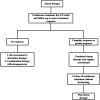Improving the quality of life of children and parents with nocturnal enuresis: the role of health education
- PMID: 39776645
- PMCID: PMC11703977
- DOI: 10.3389/fped.2024.1464465
Improving the quality of life of children and parents with nocturnal enuresis: the role of health education
Abstract
The sleep disorder nocturnal enuresis (NE) affects children's health and quality of life, as well as places a heavy burden on their families. Treatment improves the child's quality of life. Unfortunately, some parents do not seek treatment for their children because they are unaware or misinformed about NE. The goal of health education is to enhance or maintain the patient's health status, thereby enhancing the patient's quality of life through positive coping strategies. Educating children and parents about NE is an effective way for nurses to raise their awareness. Furthermore, they can improve the quality of life of children by promoting their active participation in treatment. The purpose of this paper is to review information about NE and explore the role of health education in improving children's and parents' quality of life.
Keywords: children; health education; nocturnal enuresis; parents; quality of life.
© 2024 Liao, Zhu, Xie, Wang and Zhou.
Conflict of interest statement
The authors declare that the research was conducted in the absence of any commercial or financial relationships that could be construed as a potential conflict of interest
Figures


References
Publication types
LinkOut - more resources
Full Text Sources

